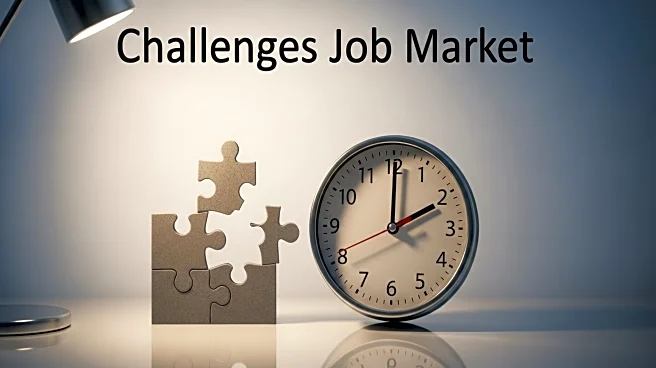What's Happening?
The U.S. job market is experiencing significant challenges as recent data indicates a slowdown in job growth and an increase in unemployment rates. The Bureau of Labor Statistics reported that only 22,000 jobs were added in August, pushing the unemployment rate to 4.3%. This marks the highest level of joblessness since late 2021. The slowdown is attributed to various factors, including economic uncertainty, inflation, and trade policy changes. Many companies are reducing their workforce, with significant layoffs occurring in manufacturing, mining, and the service sector. Additionally, job vacancies are shrinking as employers hesitate to hire, leading to a labor market gridlock.
Why It's Important?
The current state of the job market has significant implications for the U.S. economy and its stakeholders. The increase in unemployment and slowdown in job growth could lead to reduced consumer spending, affecting businesses and economic growth. The layoffs and hiring slowdown also highlight the impact of automation and artificial intelligence on the workforce, as companies seek to increase efficiency. The situation poses challenges for new entrants into the job market and those recently laid off, making it difficult to find employment. The economic uncertainty and potential interest rate cuts by the Federal Reserve could further influence the job market dynamics.
What's Next?
The future of the U.S. job market remains uncertain, with potential interest rate cuts by the Federal Reserve on the horizon. Companies may continue to adjust their workforce in response to economic conditions, and the impact of automation on jobs could become more pronounced. Policymakers and businesses will need to navigate these challenges to support economic stability and job creation.











